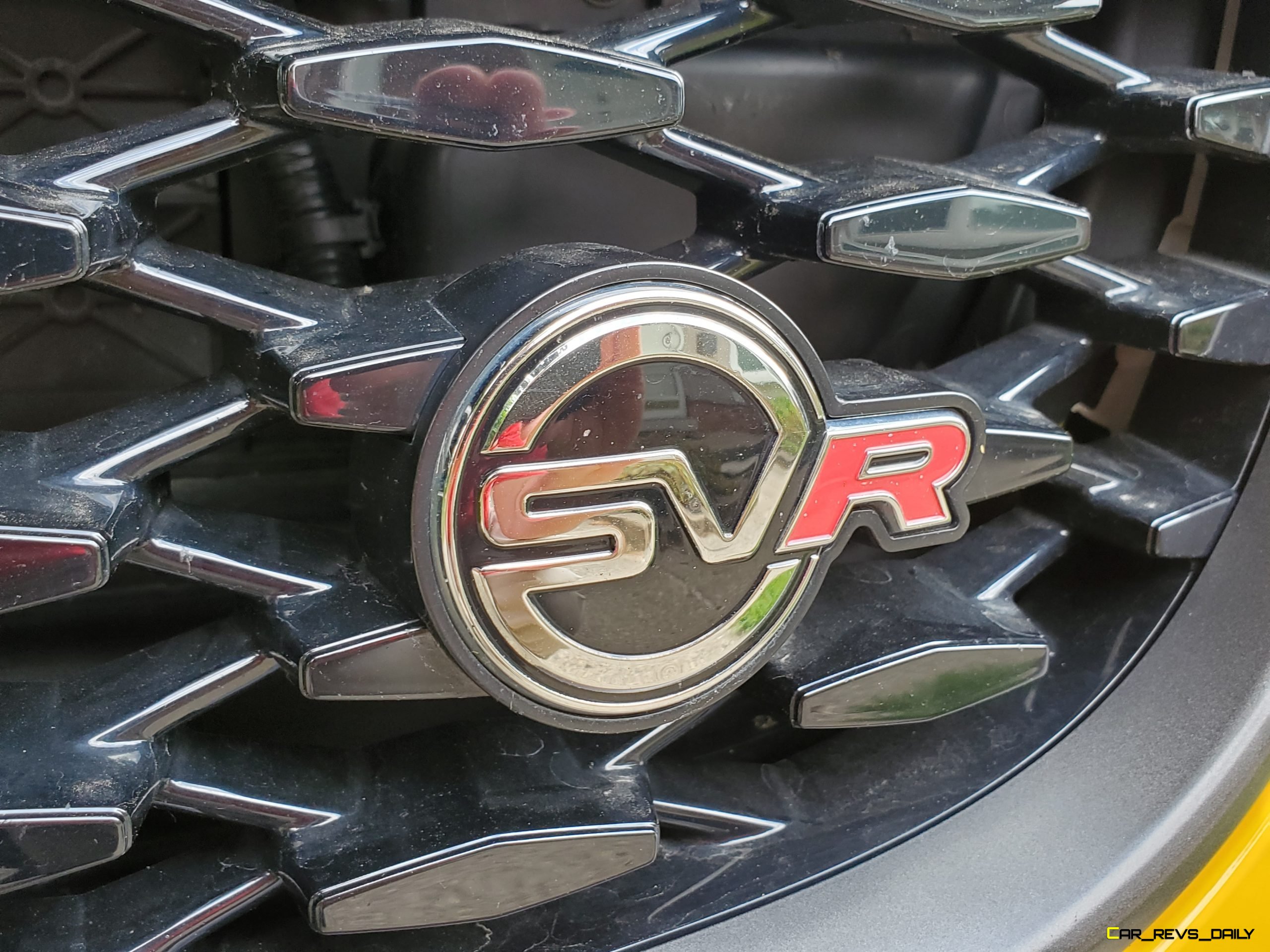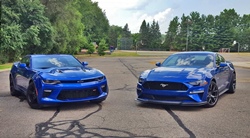The auto industry is rapidly changing, and no brand serves as a better example of this fact of life than Jaguar. It wasn’t too long ago that Jaguar was once a brand defined by car-based offerings (SUVs were left to corporate sibling Land Rover.) In recent years, sluggish sales and the strong surge in SUV demand forced Jaguar to change its core identity and embrace the utility vehicle with the debut of the F-Pace and the smaller E-Pace. The standard F-Pace is already an impressive luxury SUV that delivers luxury and spirited performance in a balanced package. But what if you’re a buyer that craves more power? Jaguar has the answer with the 2021 F-Pace SVR, but does it still have the stuff to keep up with rivals, and is time running out to buy one?
F-Pace SVR Lone Remaining SVO Model Jaguar

The F-Pace SVR already has alot riding on its sculpted shoulders. With the demise of the F-Type SVR, it’s now the lone remaining SVO model (for now) that Jaguar offers and is also one of two remaining Jaguar models to offer a V8 still. But before we get into the performance side of this SUV, we might as well talk about some of the modest revisions that the SVR received for the new model year. Like the standard F-Pace, the SVR benefits from a modest refresh that tweaks the front and rear styling to help sharpen it more while also adding some renewed zest at the same time, thanks to the help of all LED lighting front and rear.

This refresh also allows the SVR to stand out when viewed against some of its performance rivals which have sacrificed stylish charm for functional practicality, with BMW’s rapidly growing twin-kidney grilles being the most prominent example of this trend in action. Instead, Jaguar reps claim that the functionality is baked into the fine details, with some of the revised bodywork helping to improve aerodynamics, which is responsible for a three mph boost in top speed to 178 mph. We also liked the shouty $4,550 bright yellow paint, but buyers looking for more subtlety can also choose darker colors or even the traditional white and grey. A sleek set of 21-inch wheels are standard, but our tester arrived with $1200 22-inch alloy wheels with Pirelli P Zero PZ4 summer tires providing impressive amounts of grip.
Interior Is Better Than Ever

Slip inside the cabin, and you’ll see that Jaguar designers have added an all-new dashboard design and higher-quality materials for many of the touch points. A redesigned center console also makes using some of the controls easier, while a reworked 11.4-inch infotainment system makes full use of Jaguar’s Pivi Pro software. This software is quicker than systems of the past and was arguably one of our favorite tech highlights of the Jaguar. The leather-adorned sport seats are unchanged and still provide a supple mixture of comfort and support.

The backseat is comfortable for adults, but we wish that some of the attention to detail that was given to the front of the SUV was given to the second row with our attentive eyes spotting some cheap plastics in the lower part of the doors and we wish that the windows didn’t make you feel like you are in a bunker. The SVR also lacks some of the polish that you see in comparable BMW and Audi models, and while this gives the SVR’s interior a distinct personality, it also makes it very hard to cross-shop between them and that might cost the SVR some buyers looking for a luxury performance SUV that can fully accommodate their technology needs.
Supercharged V8 Prepares For One Last Ride

The real selling point here is what lies under the hood, with all SVR models being powered by a 5.0 liter supercharged V8. This V8 first appeared in 2009 and has been a familiar but welcome friend in SVR-badged products for years. We thought that the engine would be axed when Jaguar closed the Wales-based assembly plant that it was produced in last year, but in a surprising move, Jaguar chose to move production to an in-house setting and opted to keep it alive for a few more years.

It still produces 550 hp, but torque has been turned up slightly to 516 lb-ft of torque which helps enhance low-end feel under hard acceleration. The eight-speed automatic also gets revised software which helped our tester make the sprint to 60 mph in 3.7 seconds. When you’re not impressing people with the Jag’s stop light sprinting skills, the SVR can also be a comfortable cruiser when you take it down freeways with the suspension set in comfort mode. You still get a degree of firmness in the suspension, but many bumps and divots are absorbed quite well and do little to unnerve our tester. Dynamic mode is best left for smoother tarmac, but we’re glad that the adaptive exhaust can deliver full barks of volume in all driving modes via a separate satellite button. The SVR has a playful personality when placed into Dynamic mode (represented by a race helmet), and it’s eager to leap forward from a stop. Still, thankfully, it’s not overwhelming, and this cat is a very forgiving instrument for a wide range of drivers. All-wheel drive is standard, but most of the time, the Jag has a rear-wheel bias, with Ice and Snow mode being the two that produce a 50-50 split in the amount of torque sent to each axle.

But while the V8 and the suspension do a good job of going through the motions when pushed hard, the one gripe that we had was with the electronically boosted brakes that came to the F-Pace for 2021. They still deliver smooth stops, but we discovered that the pedal is harder to modulate at low speeds, and there was a brief learning curve before our feet had the chance to get used to how much travel and bite that the pedal transmitted to our feet.
Value Quotient
Pricing for the 2021 Jaguar F-Pace is reflective of its segment, but it still manages to be a bargain when compared to some of its rivals, with base models starting at $85,950. Our tester arrived with a host of optional extras, which helped push the final price to $97,379 before taxes and other fees are factored in. That may seem like alot at first glance, but this allowed our tester to be less expensive than a comparable BMW X3 M, which can easily surpass $100,000 when equipped with comparable options. The Bimmer is faster and is riding on newer bones but it’s hard to ignore the sizable price gap between the two.

It’s also less expensive than the Tesla Model X, with the electrified SUV having a higher base price than the Jaguar. The Tesla is also faster, but electrification as a whole is still going through growing pains. The Tesla is affected by additional factors stemming from this, like the availability of charging stations and range anxiety when an owner chooses to go on a long trip with it versus having the ability to formally pump gas into it from a more robust gasoline network.
These things and more make the 2021 Jaguar F-Pace a potent player in a rapidly evolving segment but get your hands on one while you can, the V8’s future is uncertain after it makes its appearance in the Land Rover Defender, and Jaguar itself is preparing for an all-electric future with the F-Pace SVR and other gasoline-powered models in the lineup being the last of a rapidly departing era in automotive history.

Carl Malek has been an automotive journalist for over 10 years. First starting out as a freelance photographer before making the transition to writing during college, his work has appeared on numerous automotive forums as well as websites such as Autoshopper.com.
Carl is also a big fan of British vehicles with the bulk of his devotion going to the Morgan Motor Company as well as offerings from Lotus, MG, and Caterham. When he is not writing about automobiles, Carl enjoys spending time with his family and friends in the Metro Detroit area, as well as spending time with his adorable pets.








































